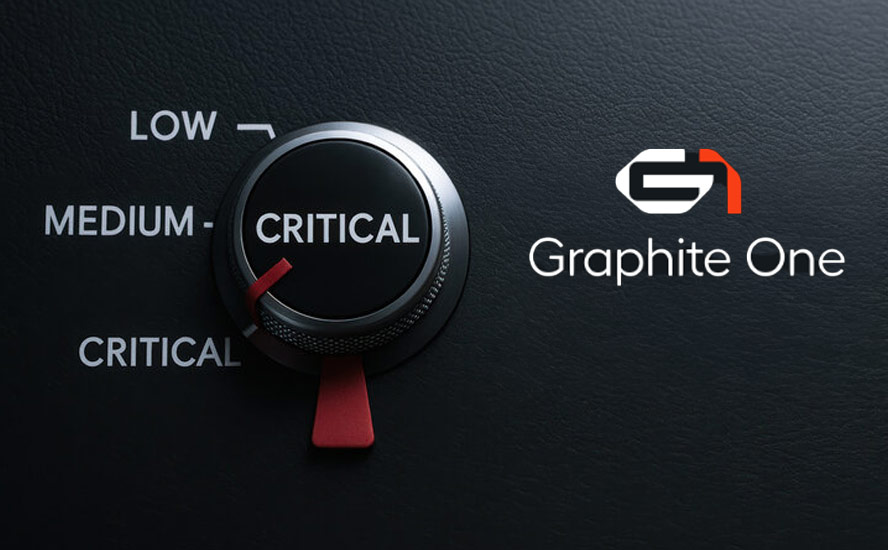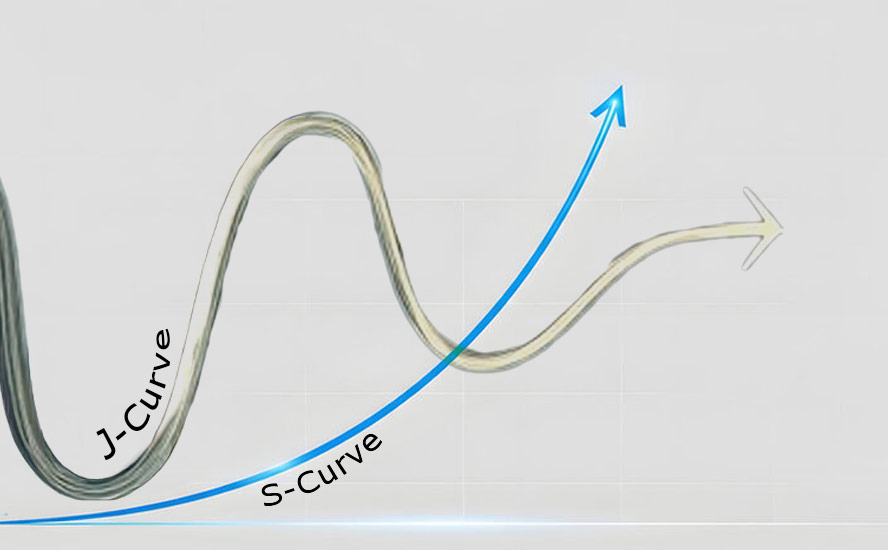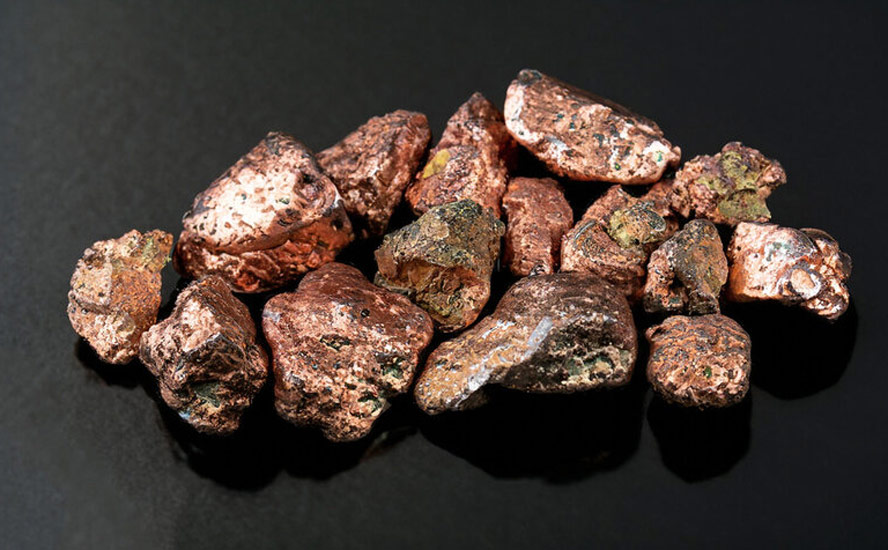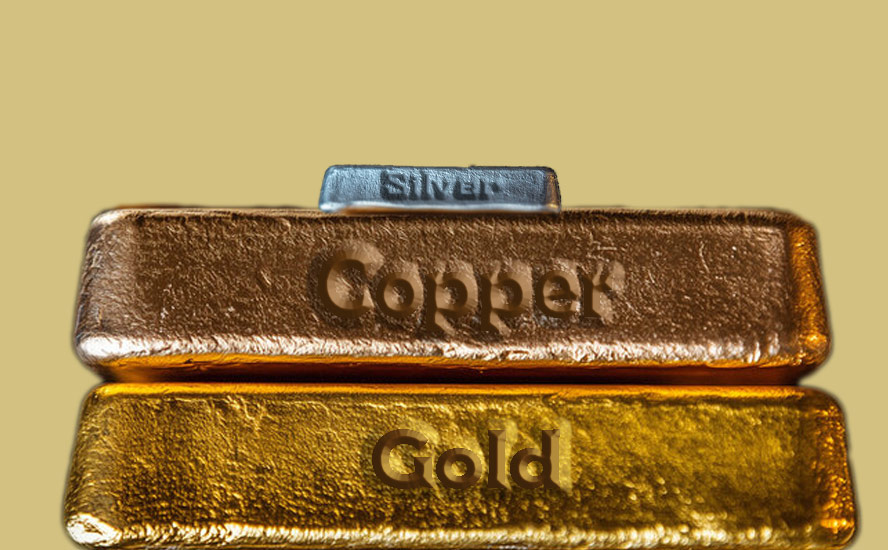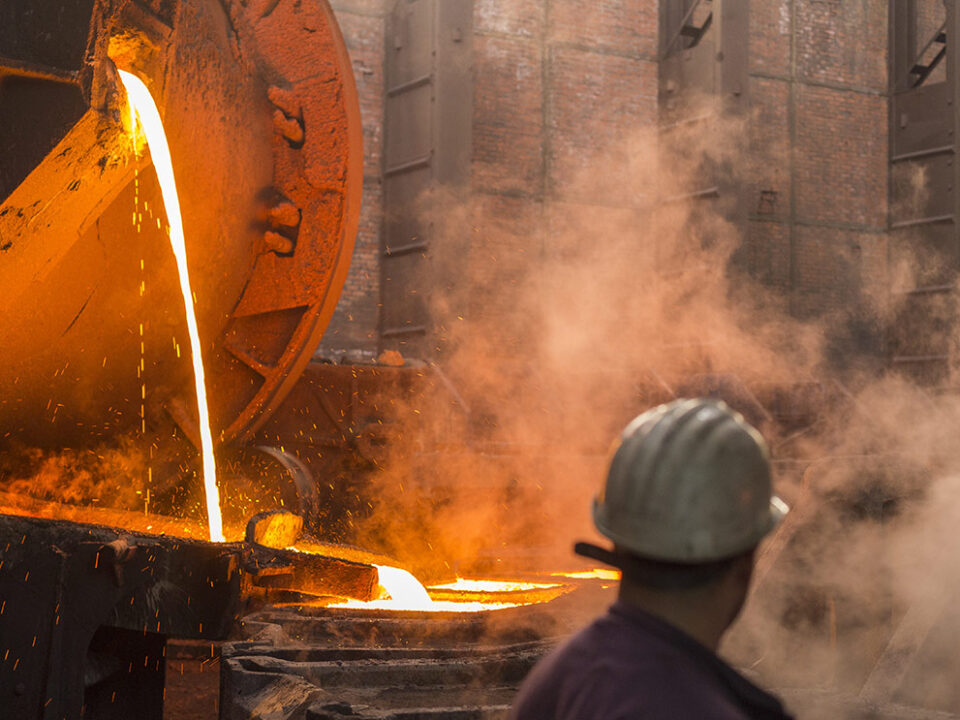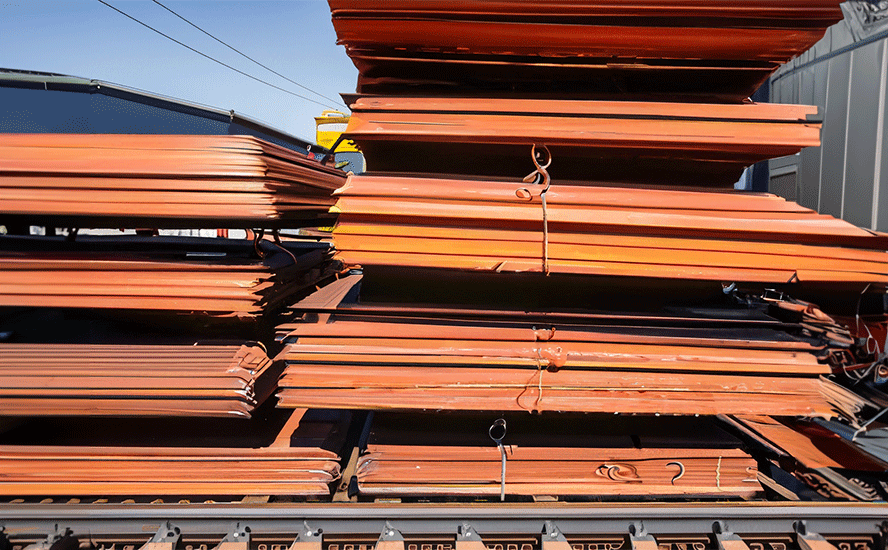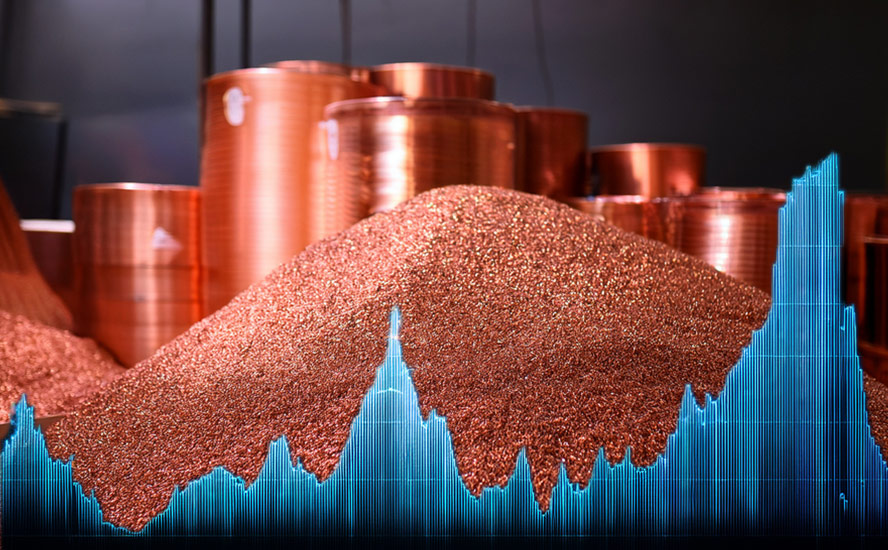Want to lower the price of an EV? Make batteries with metals sourced from North American mines
2021.11.17
Range anxiety and sticker shock are the two biggest hurdles to electric vehicles reaching price parity and eventually overtaking sales of traditional “ICE” vehicles fueled by gasoline or, increasingly rare, diesel.
Ranges are being lengthened to suit electric-vehicle skeptics, with the Tesla Model S achieving a calm-inducing 373 miles. The California-based automaker also occupies the next three positions of the Kelley Blue Book’s 10 Longest Range Electric Cars of 2021, followed by the Ford Mustang Mach-E @ 305 miles, the Chevrolet Bolt (259mi) and the Hyundai Kona Electric (258mi).
The problem facing the marketing departments at these companies? None of the above-mentioned vehicles retails at less than US$38,000, or roughly CAD$47,500.
At Battery Day 2020 Tesla CEO Elon Musk set himself an ambitious target: to make an electric vehicle for under $25,000, which is the price seen as critical to delivering an EV to the masses. How is Musk doing with that? The cheapest Tesla in the Longest Range List is the Model 3, starting at $46,490.
The range-winning Model S starts at nearly $82,000. Sticker-pricing the Model 3 at $25,000 would mean cutting over $20,000 in costs. It’s tough to imagine Tesla reaching that goal without undergoing a major overhaul of its supply chain. Same goes for other big automakers also aiming to bring down prices, such as Toyota and Volkswagen that have poured billions into the race.
They may want to start with the battery.
An EV uses the same rechargeable lithium-ion batteries as found in phones or laptops, only bigger. The cathode, one of two components that stores and releases electricity, is the priciest part of the battery cell, because it requires nickel, manganese and cobalt— expensive metals found in one of the most common battery chemistries, NMC 8-1-1. (eight parts nickel to one part manganese and one part cobalt)
The anode is made from graphite, a critical metal that is harder to source than lithium. These materials need to be mined and processed into high-purity chemical compounds, then made into suitcase-sized battery packs, a procedure that up to now has been dominated by Asian suppliers, particularly China, which accounts for roughly 75% of global lithium-ion battery capacity.
According to Bloomberg, the average battery in a typical EV costs about $6,300, and while that has come down 89% over the past decade, the industry-average price of $137 per kilowatt hour is still above the $100 per kWh an EV’s cost should match a car with an internal combustion engine.
The 80-kWh batteries in a Tesla Model 3 sedan cost about $12,000, or 25% of the vehicle’s total price.
Why are they so expensive? Apart from the cost of materials, the battery supply chain is fragmented and involves shipping components long distances. The ingredients of an EV battery may come from a lithium brine mine in Chile, a nickel laterite operation in Indonesia or a cobalt mine in the DRC. These materials and then shipped to China where the majority of cathodes are made. Cathode and anode metals generally stay in northeast Asia while battery cell makers in Japan, South Korea and China manufacture them into the finished products that fit into electric cars, trucks, vans and buses. Batteries are then shipped globally, an expensive supply chain indeed.
This supply chain worked fine when EVs were a niche market confined to celebrities and high-income individuals wanting to lighten their carbon footprint. However, successfully ramping up production of electric vehicles to the level of market penetration governments are talking about (Biden and US automakers are targeting 50% electric-vehicle sales in the country by 2030; British Columbia passed legislation requiring all light-duty cars and trucks sold in the province to be emissions-free by 2040) calls for a re-think of the way battery ingredients are sourced and used by the auto industry.
The change starts with localizing production.
Lithium
Rising demand for lithium-ion batteries is stoking prices for the light element, which can be extracted from brines, clays or the mineral spodumene found in pegmatites, an igneous rock.
The prices of lithium carbonate and hydroxide, both used in the li-ion battery cathode, have soared this year on break-neck demand and tight supply.

Source: Trading Economics
Benchmark Mineral Intelligence forecasts lithium demand to more than triple between 2020 and 2025, rising to a million tonnes and out-pacing supply by 200,000 tonnes.
Another market analysis firm, CRU, foresees 2021 lithium demand of about 450,000 tonnes will exceed supply by around 10,000 tonnes.
A December 2020 Forbes article quotes investment bank UBS stating that at today’s prices, lithium “might run out by 2025.”
EV sales are expected to hit 55% of total vehicle sales as early as 2030. That represents 65 million units, and 3 million tonnes of lithium in just eight years, compared to the 400,000 tonnes of lithium per year mined currently.
Even if you combine all existing operations with future projects, that’s only 1Mt of future lithium, compared to the 3Mt we need by 2030. With all that is going on in the US — Biden’s clean energy agenda; America now the world’s second largest EV manufacturer behind China; new battery plants being built including Tesla’s second gigafactory in Texas; billions worth of EV investments coming from major carmakers like Ford, GM, VW and Mercedes, battery-makers such as Korea’s SK Innovation; and 11 electric vehicle start-ups such as Rivian — we would expect there to be a lot of lithium needed to satisfy a burgeoning domestic mine to battery to EV supply chain.
In fact there is only one US lithium mine, Albemarle’s Silver Peak in Nevada, outputting a tiny 5,000 tonnes of lithium carbonate per year, according to the US Geological Survey.
Bloomberg NEF shows just over five times more lithium is needed in 2030 compared to current levels. In the absence of new North American lithium supply, this lithium will have to come from China, which as I stated, processes the majority of the world’s lithium and makes nearly two-thirds of all lithium batteries.
It is ridiculous to think that the US can rely on China for delivering a steady and reliable supply of lithium and other critical minerals it has locked up.
In fact, we don’t have to. There is enough lithium in North America to satisfy US and Canadian needs, and then some. Returning to what I said earlier, it starts with localizing production.
Cypress Development Corp. (TSXV:CYP, OTCQB:CYDVF, Frankfurt:C1Z1) has a sizeable lithium deposit in Nevada from which they are trying to produce lithium hydroxide, the preferred lithium product for EV batteries. They see themselves profiting from a lithium market segment that is expected to see high demand and potential shortfalls in coming years, especially in North America as the production of battery cells and electric vehicles ramps up.
Cypress’s Clayton Valley lithium deposit would be mined from neither brine nor hard rock, but claystone. An average production rate of 15,000 tonnes per day to produce 27,400 tonnes LCE annually over a +40-year mine life means the project stacks up extremely well against any of the 10 deposits listed here. The company, in our opinion, is extremely undervalued, having already completed a preliminary economic assessment (PEA) and a prefeasibility study.
Of course, there are several lithium juniors all trying to bring new deposits into production; Cypress happens to be our pick due to a number of factors including: its size, its scalability to a major’s needs, its low cost of production, its metallurgy, its potential to produce valuable rare earth by-products, and last but not least, its location, in mining-friendly Nevada.
Most recently attention has focused on a pilot plant the company is running to test its lithium extraction process.
According to Cypress, the one tonne per day plant will provide essential data for a planned feasibility study and enable the company to produce marketing samples to support negotiations with potential offtake and strategic partners.
Last week the company reported the launch of extraction testing of lithium-bearing claystone, with test work ongoing utilizing chloride-based leaching combined with the Chemionex—Lionex process for Direct Lithium Extraction (DLE).
“The pilot plant is operating as designed. Leaching is now underway on lithium clay,” said Bill Willoughby, Cypress’s President and CEO, in the Nov. 10 news release.
Through its flow sheet, Cypress not only has the capability to make lithium hydroxide for EV cathodes, but potentially rare earth oxides needed for a plethora of applications necessary for ensuring the economic and military security of the United States.
If Cypress is able to prove, at its pilot plant, that it can make lithium hydroxide at reasonable cost, and can scale it up, it will be a huge coup for the company and will shift the goal posts for the lithium industry at a time when the industry is in dire need of finding a way to add significantly more supply to balance out explosive demand for battery-grade lithium.

I believe the future of US lithium supply is neither South American lithium brines, nor spodumene deposits Down Under, but lithium hydroxide produced right in Nevada, the top global mining jurisdiction according to the last Fraser Institute Survey, from claystone deposits that are proving to be extremely amenable to low-cost leaching processes, that potentially can also drop out valuable by-products, including rare earths. If Cypress is successful in moving its project forward to production, the size of the deposit would likely set the price of lithium hydroxide, or significantly influence it, for many years to come.
Cypress Development Corp.
TSXV:CYP, OTCQB:CYDVF, Frankfurt:C1Z1
Cdn$2.39, 2021.11.6
Shares Outstanding 126.6m
Market cap Cdn$301m
CYP website
Graphite
An average hybrid-gasoline electric vehicle carries up to 10 kg of graphite and a plug-in EV has seven times that amount – around 70 kg. Every million EVs, which is only about 1% of the new car market, requires in the order of 75,000 tonnes of natural graphite. This represents a 10% increase in flake graphite demand. The need for lithium batteries not only for EVs, but energy storage, handheld tools like drills, and an array of consumer electronics like cell phones and laptops, is almost certain to outstrip supply. The current lithium-ion battery manufacturing capacity currently under construction would require flake graphite production to double by 2025.
Currently nearly all graphite processing takes place in China because of the ready availability of graphite there, weak environmental standards, and low costs. However as we have seen with rare earths, a market that China manipulated in its favor following a territorial dispute with Japan in 2010, being overly reliant on foreign suppliers is dangerous.
The United States (and Canada) needs secure, cost-competitive and environmentally sustainable sources of graphite, and that means developing graphite deposits into mines.
A White House report on critical supply chains showed that graphite demand for clean energy applications will require 25 times more graphite by 2040 than was produced worldwide in 2020.
There is no substitute for graphite in an EV battery and lithium-ion batteries are expected to be the technology that runs electric vehicles for the foreseeable future making graphite indispensable to the global shift towards clean energy.
Currently there are no producing graphite mines in the United States, and only 10,000 tonnes a year is being mined from two facilities in Canada. The fact is, for the United States to develop a “mine to battery” supply chain at home, it currently has no choice but to import its raw materials from foreign countries. For battery-grade graphite, that means China.
Fortunately, there is another option that most industry observers have not cottoned onto. There is plenty of North American graphite for local consumption, if industry and government can find the collective will to “make it so”.
On February 24, 2021, President Joe Biden signed an executive order (EO) aimed at strengthening critical US supply chains. Graphite was identified as one of four minerals considered essential to the nation’s “national security, foreign policy and economy.”
Earlier this year, the Federal Permitting Improvement Steering Committee (FPISC) granted High-Priority Infrastructure Project (HPIP) status to Graphite One Inc. (TSXV:GPH, OTCQX:GPHOF), which is aiming to develop America’s first high-grade producer of coated spherical graphite (CSG) integrated with a domestic graphite resource at Graphite Creek, Alaska.
The HPIP designation allows Graphite One to list on the US government’s Federal Permitting Dashboard, which ensures that the various federal permitting agencies coordinate their reviews of projects as a means of streamlining the approval process.
Graphite Creek is the highest-grade and largest known flake graphite deposit in North America, spanning 18 km.

The project is envisioned as a vertically integrated enterprise to mine, process and manufacture Coated Spherical Graphite (“CSG”) for the lithium-ion electric vehicle battery market. Graphite One aims to become the first US vertically integrated domestic producer to do so.
The latest resource estimate (March 2019) for Graphite Creek showed 10.95 million tonnes of measured and indicated resources at a graphite grade of 7.8% Cg, for some 850,000 tonnes of contained graphite. Another 91.9 million tonnes were tagged as inferred resources, with an average grade of 8.0% Cg containing 7.3 million tonnes.
A preliminary economic assessment (PEA) envisions a 40-year operation with a mineral processing plant capable of producing 60,000 tonnes of graphite concentrate (at 95% purity) per year.
Once in full production, Graphite One’s proposed graphite products manufacturing plant — the second link in its proposed supply chain strategy — is expected to turn graphite concentrates into 41,850 tonnes of battery-grade coated spherical graphite and 13,500 tonnes of graphite powders per year. A location in the Pacific Northwest is being considered.
Graphite One Inc.
TSXV:GPH, OTCQX:GPHOF
Cdn$2.09, 2021.11.16
Shares Outstanding 81.5m
Market cap Cdn$174.2m
GPH website
Sulfide nickel
Nickel sulfate powder made from nickel sulfide ore is a crucial ingredient in cathode formulation for lithium-ion batteries.
Nickel is popular with EV battery-makers because it provides the energy density that gives the battery its power and range. Increasing the amount of nickel in a battery cathode ups its power and range.
The rate of nickel consumption for EV battery manufacturing is set to outpace both lithium and cobalt over the next decade, with an average annual growth rate of 29%, according to Fitch Solutions.
A recent report prepared by Wood Mackenzie in advance of COP26 estimates that global lithium-ion battery capacity is set to double in just two years, with storage and EV application to drive battery demand to 2.3TWh by the end of the decade.
Based on Woodmac’s forecast, nickel demand is expected to double from 2.4Mt today to 4.9Mt in 2040, which, at the current rate of mine production, would leave us with a severe supply shortfall.
With existing sulfide mines becoming depleted, nickel miners are having to go to the lower-quality, but more expensive to process, as well as more polluting nickel laterites such as found in the Philippines, Indonesia and New Caledonia.
This obviously defeats the purpose of what the world is trying to achieve. Soon enough, the mining industry will need to seek out new sulfide deposits from which the extraction of high-grade nickel needed for battery chemistries is economically, technically and environmentally feasible.
This is excellent news for companies on the hunt for minerals that support the electrification of the transportation system and the decarbonization of energy sources.
Renforth Resources’ (CSE:RFR, OTCQB:RFHRF, FSE:9RR) Surimeau project in Quebec hosts several target areas for gold and industrial metals (nickel, copper, zinc, cobalt, silver). The 260 square-kilometer property is located south of the Cadillac Break, a major regional gold structure.
Summer prospecting on the southwestern part of the Huston area returned 1.9% nickel, 1.3% copper, 1,170 parts per million (ppm) cobalt and 4 grams per tonne silver, from a grab sample.
The little-explored Huston area is located about 18 km from Victoria West, where Renforth has been advancing the nickel, copper and zinc-mineralized target. Victoria West is located at the western end of a 20-km-long magnetic anomaly that hosts proven mineralization at either end.
“Our Surimeau District Property hosts our first exploration for nickel, copper, cobalt — 3 of the primary metals required for batteries and, in particular, Electric Vehicles. While still at a very early stage, the extent of the findings outlined in this press release and the magnitude of additional potential within the 260 km2 property, its known targets and unexplored prospective ground warranting further exploration, Surimeau presents an exciting new path for Renforth Resources in metals that are forecast to be in high demand as the EV and energy storage market grows,” states Renforth’s President and CEO Nicole Brewster, in the Nov. 10 news release.
Click here for our last RFR article highlighting the nickel and cobalt grades.

When you think about it, Surimeau’s size and metallic content make it an ideal project from which to source in-demand metals such as copper, nickel and cobalt. The last two are necessary for building lithium-ion batteries, and the copper market is continuing its bullish trajectory thanks to the amount of copper needed in EVs (around 4X more than a traditional vehicle), renewable energy, and 5G, along with all its regular uses in construction, telecommunications and transportation.
In fact nickel just got a boost from the US Geological Survey, along with zinc, used to galvanize steel. The USGS is reportedly proposing that both metals be included in its redrafted list of critical minerals. The list has increased from 35 to 50 since the last iteration in 2018.
Reuters columnist Andy Home writes that the US relies on refined nickel imports for around half of its annual consumption, with the top three suppliers being Canada, Norway and Finland. Currently the only operating US nickel mine is the Eagle operation in Michigan, which exports its concentrates for overseas refining.
Like lithium and nickel, this situation of US mineral dependence presents a golden opportunity for the right company(ies). It’s no wonder that nickel was declared a critical mineral, given that there is currently no domestic production, same as graphite.
Renforth’s Surimeau project has what it takes to put the United States back on the right track, of mining and processing nickel domestically so that it does not run into shortage problems later when the demand for nickel-rich EV cathodes outstrips available nickel supply.
This nickel sulfide deposit at surface is just starting to reveal its secrets to the market. Just how large the system is, remains to be seen. RFR is clearly hoping to find nickel sulfides that when refined would be appropriate for lithium-ion batteries. This would make the project and/ or the company attractive to potential acquirers.
And Surimeau also has zinc. According to a project page, the Victoria Target was last explored in the 1990’s by LAC Minerals, looking for gold. In addition to the presence of gold, which did not meet the criteria then used (in a much different gold price environment) for further development, LAC, and previous operators, determined that there was nickel, zinc and copper present, plus a few more minerals. Renforth’s initial fieldwork validates the presence of the mineralization.
Renforth Resources
CSE:RFR, OTCQB:RFHRF, FSE:9RR
Cdn$0.08 2021.11.16
Shares Outstanding 251m
Market cap Cdn$20.9m
RFR website
Conclusion
Successfully ramping up production of electric vehicles to the level of market penetration governments are talking about calls for a re-think of the way battery ingredients are sourced and used by the auto industry.
The ingredients required to make li-ion batteries (lithium, sulfide nickel, graphite, manganese, cobalt) are expensive, the battery supply chain is fragmented and involves shipping components long distances, adding to costs.
The industry-average price of $137 per kilowatt hour is still above the $100 per kWh an EV’s cost should match a car with an internal combustion engine. For most EVs, the battery represents a quarter to a third of the cost.
These supply issues unique to EVs are being magnified by the covid-related supply-chain woes practically all companies are facing right now, including a worldwide shortage of semiconductors that is plaguing the auto industry. When you add up all the supply problems surrounding electric-vehicle manufacturing, it’s no wonder they are so expensive.
With adversity, however, comes opportunity.
Eventually global aggregate supply will catch up with aggregate demand and the supply bottlenecks will free up. When they do, somebody is going to figure out how to build an EV battery cheaper than an ICE car or truck.
The trick is sourcing production locally, instead of relying on foreign suppliers and paying exorbitant shipping costs to get the raw materials from battery-making facilities in Asia to North American auto assembly plants.
If we could identify US sources of copper, lithium and graphite (the ‘Big Three Commodities of Electrification and Decarbonization’ I’ve been talking and writing about for years), along with nickel and cobalt needed for rechargeable batteries, and zinc whose primary purpose is to stop steel from rusting, we could actually start building a locally-sourced, locally-made battery supply chain, from mine to battery to electric car.
Sure, there is competition from China, the world’s leading EV manufacturer and battery-maker, and there will continue to be. But remember, the reason China’s batteries (and other goods) are so cheap is their non-existent labor and environmental standards. Unionized Western labor is among the world’s most efficient, and I’d place a bet on it producing higher-quality batteries than non-unionized Chinese workers any day.
Instead of letting China supply the processed graphite, lithium and cobalt, we could sidestep the Chinese with our very own production.
There are no doubt several companies with the capability of adding to a North American battery supply chain, we just happen to have picked three that we believe will go the furthest, the fastest.
To recap, Cypress Development has a sprawling lithium property in Nevada’s Clayton Valley right next to Albemarle’s Silver Peak mine. Silver Peak has been operating since the 1960s and it is running out of brine. Albemarle is planning to expand, making Cypress’ next-door deposit an obvious means to expansion. The company has completed a PEA and a prefeasibility study showing attractive economics and a long-life mine, of +40 years. The pilot plant is up and running, providing data for a planned feasibility study and enabling Cypress to produce marketing samples to support negotiations with potential offtake and strategic partners. Cypress’s flow sheet even shows the capability of separating rare earths from the claystone, potentially providing the company with a lucrative source of revenue to offset production costs.
Graphite Creek is the highest-grade and largest known flake graphite deposit in North America. Developing it is Graphite One, which earlier this year was granted High-Priority Infrastructure Project (HPIP) status by the US government. The Biden administration has identified graphite as one of four minerals considered essential to the nation’s “national security, foreign policy and economy.”
The latest resource estimate for Graphite Creek showed 10.95 million tonnes of measured and indicated resources at a graphite grade of 7.8% Cg, for some 850,000 tonnes of contained graphite. There is little doubt in my mind that Graphite Creek will become a mine. When it does, the US will not only have a ready supply of lithium from Cypress’ claystone lithium deposit in Nevada, but a large graphite mine in Alaska capable of mining the best material in the world for lithium-ion battery anodes. And remember, GPH is not only developing a mine, it also has plans to build a processing plant somewhere in the Pacific Northwest. This unique supply-chain vertical could completely cut China out of the equation for making batteries for North America, which arguably should be the eventual goal.
Lithium and graphite, check. How about nickel? Existing sulfide nickel deposits are getting depleted and nickel miners are having to go to nickel laterites in places like Indonesia which are more polluting and more expensive to process. Companies with battery-grade nickel sulfide deposits will therefore be in high demand going forward. Renforth Resources is an exciting young junior whose Surimeau project in Quebec boasts a 20-kilometer trend that is revealing itself to be full of battery/ energy metals including nickel, copper, cobalt and zinc.
The nickel and copper sulfides if floatable should be easily upgraded into battery-grade nickel sulfate. And with cobalt also present in the mineralogy, Renforth it would seem has the metals needed for an electrification “trifecta” of nickel, cobalt and copper, with potential zinc and maybe even platinum group elements (PGEs) to boot.
The possibility of creating North America’s very own battery supply chain is within our grasp if we, as investors, cultivate the right companies and the right projects. The goal is certainly worthwhile: eliminating US/ Canadian dependence on foreign suppliers and driving down the cost of electric vehicles to the point where they are actually affordable to the average person and the transformation from fossil-fueled to electric vehicles is done at a level that can make a difference to a warming planet.
Please don’t take my word for it on any of the above-mentioned companies and their properties. Do your own due diligence and come to your own conclusions. I certainly have, and I am confident in singling out Cypress, Graphite One and Renforth.
Richard (Rick) Mills
aheadoftheherd.com
subscribe to my free newsletter
Legal Notice / Disclaimer
Ahead of the Herd newsletter, aheadoftheherd.com, hereafter known as AOTH.
Please read the entire Disclaimer carefully before you use this website or read the newsletter. If you do not agree to all the AOTH/Richard Mills Disclaimer, do not access/read this website/newsletter/article, or any of its pages. By reading/using this AOTH/Richard Mills website/newsletter/article, and whether you actually read this Disclaimer, you are deemed to have accepted it.
Any AOTH/Richard Mills document is not, and should not be, construed as an offer to sell or the solicitation of an offer to purchase or subscribe for any investment.
AOTH/Richard Mills has based this document on information obtained from sources he believes to be reliable, but which has not been independently verified.
AOTH/Richard Mills makes no guarantee, representation or warranty and accepts no responsibility or liability as to its accuracy or completeness.
Expressions of opinion are those of AOTH/Richard Mills only and are subject to change without notice.
AOTH/Richard Mills assumes no warranty, liability or guarantee for the current relevance, correctness or completeness of any information provided within this Report and will not be held liable for the consequence of reliance upon any opinion or statement contained herein or any omission.
Furthermore, AOTH/Richard Mills assumes no liability for any direct or indirect loss or damage for lost profit, which you may incur as a result of the use and existence of the information provided within this AOTH/Richard Mills Report.
You agree that by reading AOTH/Richard Mills articles, you are acting at your OWN RISK. In no event should AOTH/Richard Mills liable for any direct or indirect trading losses caused by any information contained in AOTH/Richard Mills articles. Information in AOTH/Richard Mills articles is not an offer to sell or a solicitation of an offer to buy any security. AOTH/Richard Mills is not suggesting the transacting of any financial instruments.
Our publications are not a recommendation to buy or sell a security – no information posted on this site is to be considered investment advice or a recommendation to do anything involving finance or money aside from performing your own due diligence and consulting with your personal registered broker/financial advisor.
AOTH/Richard Mills recommends that before investing in any securities, you consult with a professional financial planner or advisor, and that you should conduct a complete and independent investigation before investing in any security after prudent consideration of all pertinent risks. Ahead of the Herd is not a registered broker, dealer, analyst, or advisor. We hold no investment licenses and may not sell, offer to sell, or offer to buy any security.
Richard owns shares of Cypress Development Corp. (TSXV:CYP), Graphite One Inc. (TSXV:GPH), Renforth Resources’ (CSE:RFR).
GPH and RFR are paid advertisers on his site aheadoftheherd.com
Legal Notice / Disclaimer
Ahead of the Herd newsletter, aheadoftheherd.com, hereafter known as AOTH.Please read the entire Disclaimer carefully before you use this website or read the newsletter. If you do not agree to all the AOTH/Richard Mills Disclaimer, do not access/read this website/newsletter/article, or any of its pages. By reading/using this AOTH/Richard Mills website/newsletter/article, and whether you actually read this Disclaimer, you are deemed to have accepted it.











